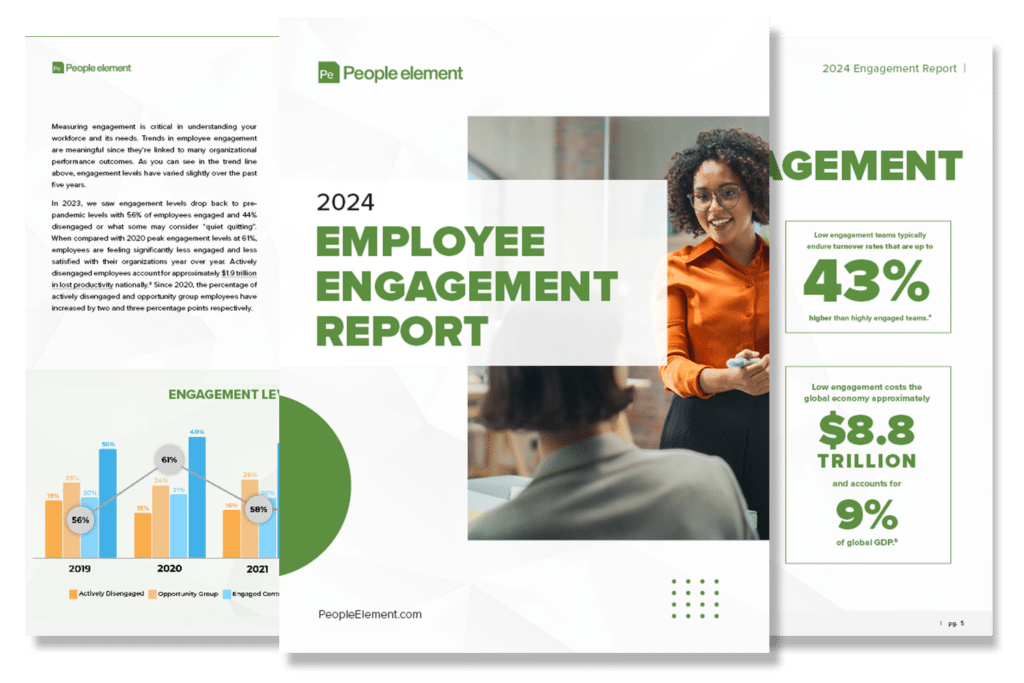Diversity and inclusion efforts are spiking across workplaces. Managers in all industries should be actively thinking about D&I often and how they can create an inclusive culture and environment. Recent findings show that strong D&I strategies are leading to positive business outcomes like increased financial performance and boosted engagement levels. We’ve collected the top four diversity and inclusion statistics that every manager should know to support their people.
1) When leaders are inclusive in their behaviors and actions it can lead up to a 70-point increase in the proportion of employees who feel highly included.
Leaders have to walk the walk. Simply adding diversity to an organization is not going to automatically enhance the workplace. Diversity plus inclusivity from both leadership and employees is a must. When leaders and managers create an example with inclusive behaviors and actions, it can lead up to a 70-point increase in the proportion of employees who feel highly included. As a result of this more inclusive environment, teams can see up to a 17-point increase in performance, a 20-point increase in decision-making quality, and a 29-point increase in collaboration. (Deloitte)
2) Companies with above-average diversity on their management teams report 19% higher innovation revenue than their below-average counterparts and better overall financial performance.
Diversity is driving innovation. According to a study by BCG, there is a strong statistically significant relationship between the amount of diversity in leadership teams and their overall innovation. Innovation revenue can be defined as the revenue brought in from products or services created in the last three years. When looking at percentages of total revenue, companies with below-average diversity report only 26% innovation revenue, whereas their more diverse counterparts report that it makes up almost half (45%) of their total revenue. Following this pattern, these organizations with above-average diversity also reported EBIT margins that were 9 percentage points higher. (BCG)
3) 83 percent of millennials are actively engaged when they feel that their organization fosters an inclusive environment.
When it comes to millennials, being supportive and inclusive goes a long way. This study found that when millennials feel their organization fosters an inclusive culture, 83% are actively engaged, 76% feel empowered, and 81% are true to themselves. On the other hand, when they don’t feel that their organization is inclusive only 60% are actively engaged, 61% feel empowered, and 59% are true to themselves. Further supporting the relationship between diversity and innovation, they also found that 74% of millennials feel that their workplace fosters innovation when an inclusive culture exists. This number drops significantly, all the way down to only 10% when they feel the culture is not inclusive. (Deloitte)
4) More than 3 in 4 employees and job seekers (76%) say that a diverse workforce is an important factor when evaluating companies and job offers.
It seems that companies across all industries are facing a shortage of employees. On the tail end of the “Great Resignation” organizations are still struggling to hire new employees. Research done by Glassdoor explored the importance of diversity and inclusion efforts for current and prospective employees. They found that 3 in 4 employees and job seekers (76%) feel that having a diverse workforce is an important factor when evaluating companies and job offers. This sentiment was highest among African American, Hispanic, and female respondents. Having an effective D&I strategy and culture can play a role in recruitment efforts and help attract new talent. (Glassdoor)
Key Takeaways:
More diverse workforces are driving innovation and positive business outcomes. The simple act of adding more diverse people to your team is not going to make a difference. The key piece is making sure that you and your leadership are actively fostering an inclusive culture where people feel like they belong. Not only does a diverse and inclusive environment lead to more innovation, engagement, and revenue, but it can also help recruit new talent.





